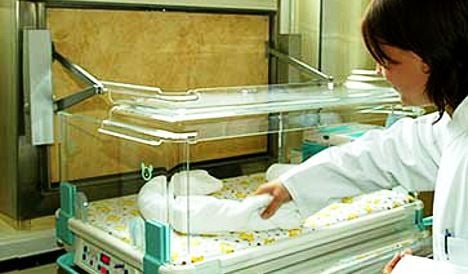Doctors said the child was born in January and is in good health. Nevertheless, she will remain in observation for a bit longer, online new website Le Matin reported.
The baby hatch was first introduced at the hospital in 2001 for people in desperate situations who felt they could no longer look after their child. Before Monday’s baby, it had been used twice for boys and four times for girls.
The Babyfenster, literally ‘baby window’, is a hatch through which people can place babies into a warm cot. Once the baby has been placed in it, an alarm sounds three minutes later notifying staff. The window then closes and cannot be re-opened.
Guardianship of the child is then immediately taken over by the authorities, who do what they can to protect the baby’s identity.
The child is placed first into foster care for two years, during which time the mother may resume her responsibilities if she chooses to do so and fulfils certain conditions. After the two-year period, the child is placed for adoption.
“This is not an abandonment because it has not resulted in the child’s death,” paediatrician and family therapist, Nahum Frenck told Le Matin.
“In the case of the box, the mother has transferred the responsibility for the child to people who are going to give her a better life.”
Following the finding of a dead newborn baby on Sunday in Wimmis in central Switzerland, Dominik Müggler of the organisation Swiss Aid for Mother and Child is calling now for more baby hatches to be installed across the country.
“The baby in the Bernese Oberland could perhaps have been saved if there were more baby hatches,” he told online news website 20 Minutes.
“It is quite clear that the road from Wimmis to Einsiedeln is too far for a mother in need.”
Persuaded by recent events, a hospital in Davos has now agreed to install Switzerland’s second baby hatch later this year. A third is also under discussion at a hospital in Zollikerberg, canton Zurich.



 Please whitelist us to continue reading.
Please whitelist us to continue reading.
Member comments